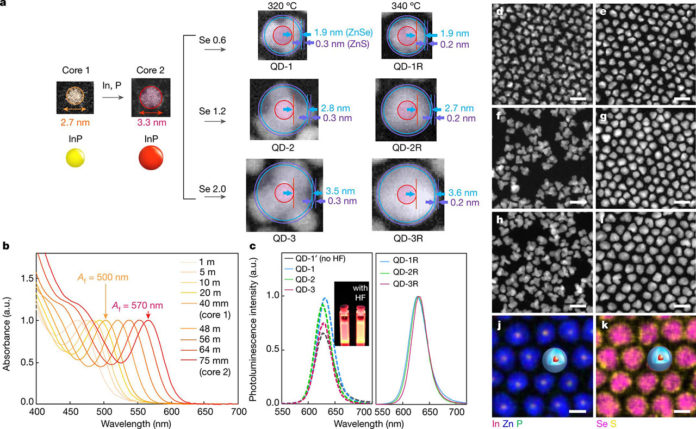Quantum dots are nanoscale semiconducting crystals that have exceptional optical and electronic properties because of the characteristics of quantum mechanics. Since their discovery, they are being used in optical devices.
Unfortunately, quantum dots have two problems that have prevented them from being fully utilized: 1. They are based on cadmium, a toxic heavy metal. 2. the QD phosphors that are used in display devices—they are not self- emissive, which means they need to be replaced by QD light-emitting diodes for them to be competitively efficient.
Samsung QLED TV screens don’t utilize the QLEDs as a source of light—instead, LCDs produce backlight, which is then consumed by a film of quantum dots.
In a new study, a team at Samsung Advanced Institute of Technology has made progress towards addressing both problems. Recently, they announced that they have improved quantum dot (QD) technology for use in large displays by developing QDs that are both more efficient and have no heavy metals.
In this new approach, scientists used a new structure that stops oxidation from degrading the QD core—it also involved creating a shell around it to keep energy from leaking out. They also shortened the ligand on the shell surface to promote speedier current flow. Furthermore, they replaced cadmium with indium phosphide, a much more Earth-friendly material.
Scientists reported, “Making changes improved quantum efficiency by 21.4 percent—and increased QD lifetime by approximately a million hours. The work indicates that the use of quantum dots for self-emissive display technology will soon be viable.”
The study is published in the journal Nature.
